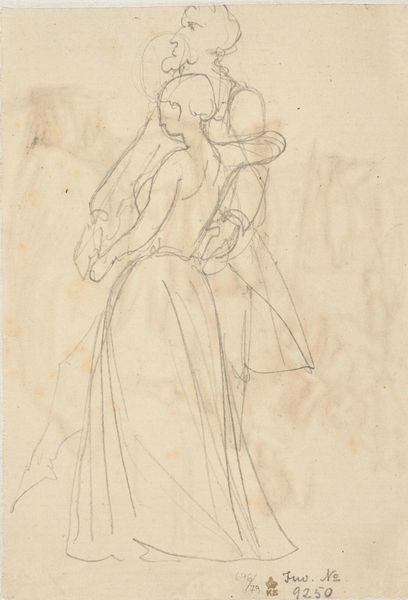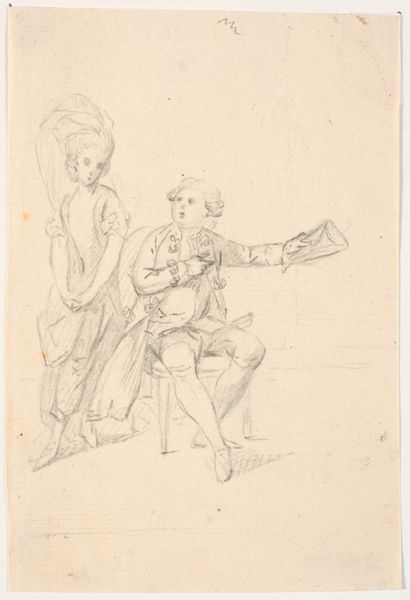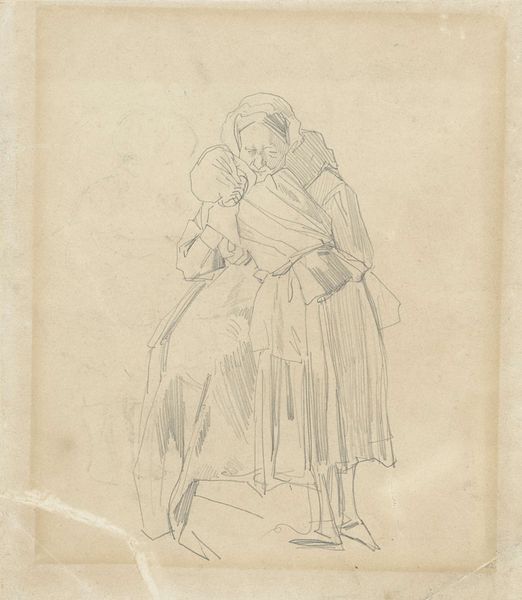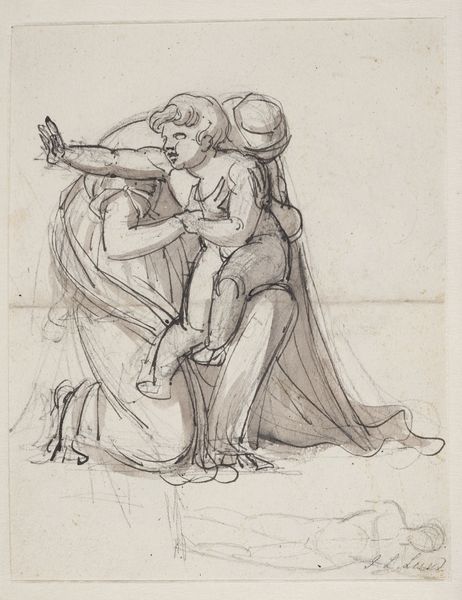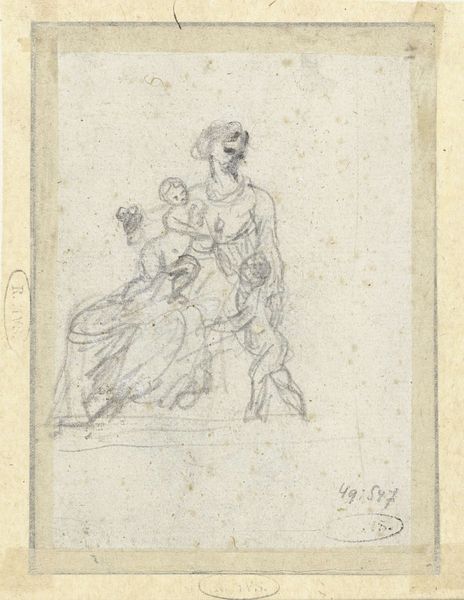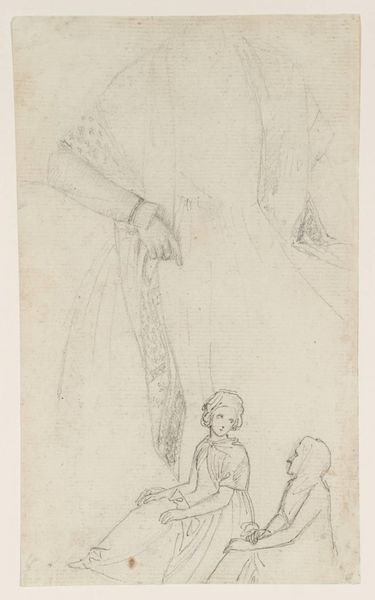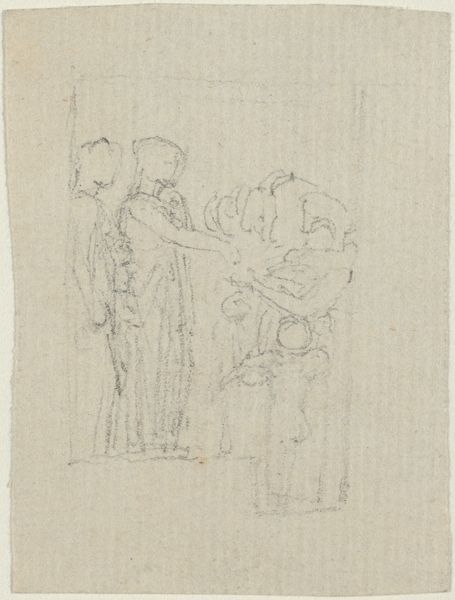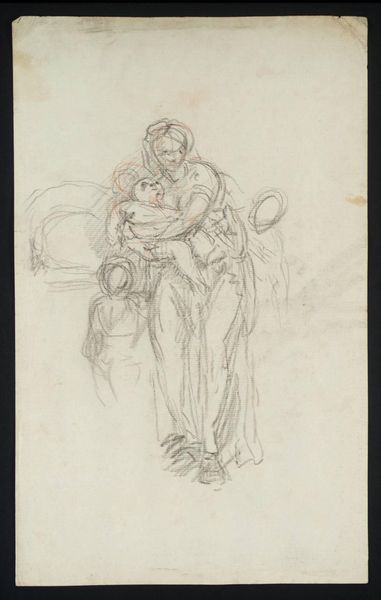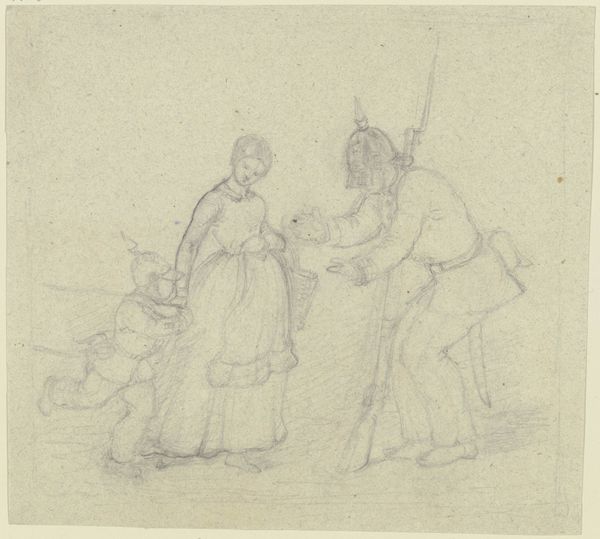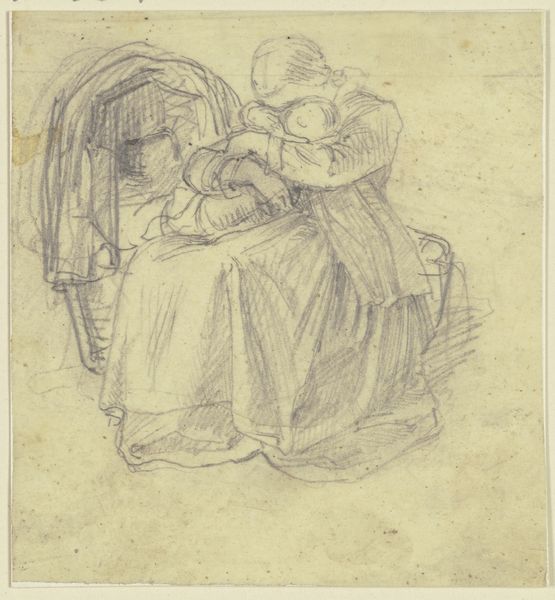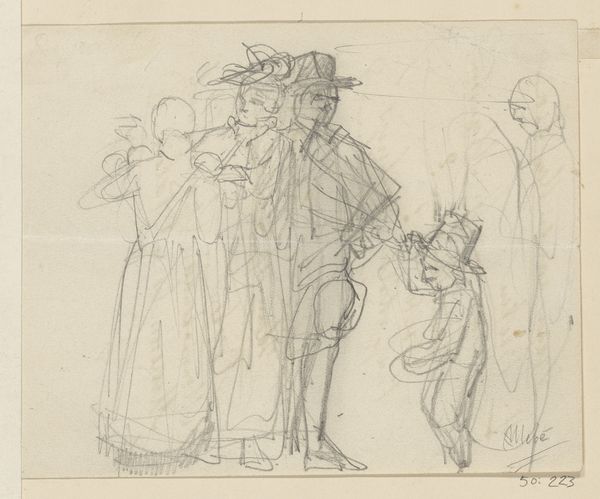
Frau im Renaissance-Habit mit einem Kind auf dem Arm und einem Jungen zu ihrer Rechten (Maria mit dem Jesuskind und dem Johannesknaben_)
0:00
0:00
drawing, paper, pencil
#
portrait
#
drawing
#
figuration
#
paper
#
11_renaissance
#
pencil
#
history-painting
#
italian-renaissance
Copyright: Public Domain
Curator: This delicate pencil drawing, which can be found here at the Städel Museum, is believed to be by Eugen Eduard Schäffer. It's titled "Woman in Renaissance Dress with a Child in Her Arms and a Boy to Her Right," or more poetically, "Mary with the Christ Child and the Young John." Editor: It feels like a whisper, doesn't it? So light and airy, like a fleeting vision of the Renaissance. I find myself drawn to the gentleness in the mother's face and the soft curls of the children's hair. There's a profound innocence to the scene, rendered so delicately on paper. Curator: Indeed. Note the linear precision characteristic of Renaissance draughtsmanship, a meticulous outlining defining forms. Consider, for example, how the fabric of the Renaissance gown subtly alludes to volume and weight through the use of shading. The entire composition hinges on the interplay of line and space, a structural harmony reinforcing classical ideals. Editor: Absolutely. And while technically precise, it still manages to feel intimate, almost personal. You get the sense the artist was captivated by the everyday beauty of this family unit, almost like capturing a memory before it fades. Look at the folds in her dress, it is alive! Curator: Undoubtedly, the choice of paper contributes to the overall reading of the work. The visible texture invites contemplation, challenging modern conceptions of the artwork as pristine or unblemished. Any tears and marks that we observe are integral to the historical reception and legacy. Editor: That's true, it really does give a rich sense of temporal depth. For me, that slight imperfection allows a powerful connection. It allows us to breathe life back into history, acknowledging the passing of time that transforms into pure beauty. Curator: It serves as a tangible marker of artistic labor and dedication, which offers a significant layer of meaning when deconstructing any historical work. Editor: Yes, and I think that makes this work particularly wonderful because we get the feeling that art isn’t about perfection or historical legacy at all. Curator: Well articulated, I'll leave it to the audience to contemplate further. Editor: I really like that! Thanks!
Comments
No comments
Be the first to comment and join the conversation on the ultimate creative platform.
